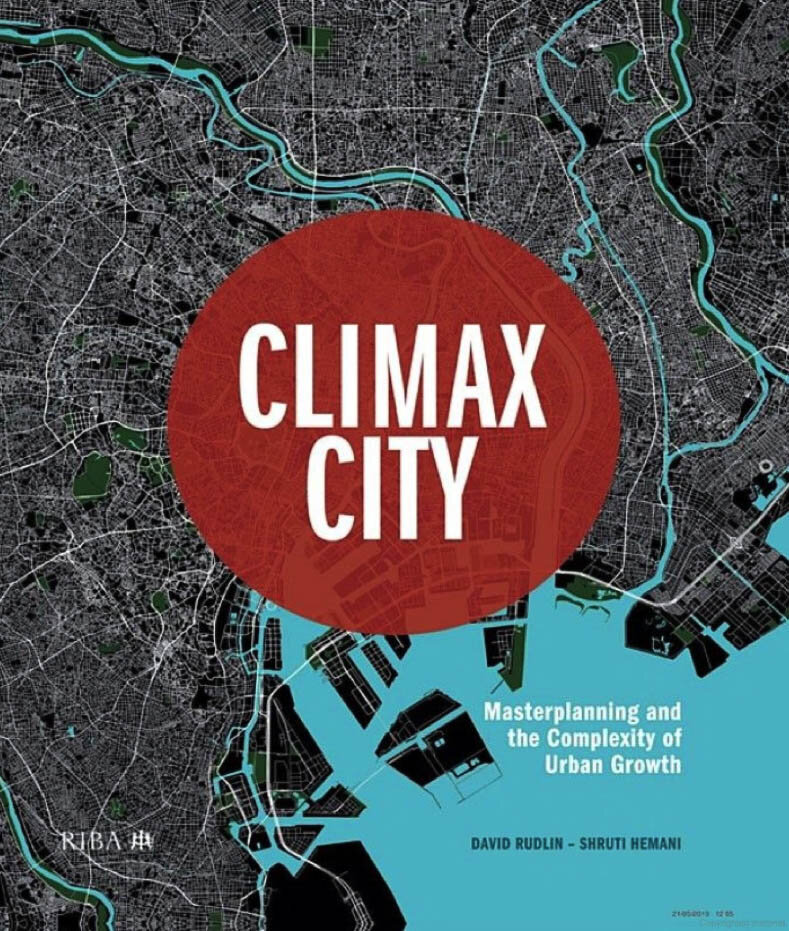Event Followup: Climax City
Climax City
Masterplanning and the complexity of urban growth
Organised by URBED (Urbanism, Environment and Design)
01.10.2019
38 Carrington Street
On the 1st of October the Urban Room hosted a talk by the authors of newly published book Climax City: Masterplanning and the complexity of urban growth.
Welcome was made by Laura Alvarez, coordinator of the Urban Design Group, working in City Council as Senior Principle Urban Designer and Conservation Officer at the Department of Development and Growth and curator of the Urban Room. Laura introduced the book, explaining that as Nottingham goes through a period of unprecedented growth with urban zones expected to be unrecognisable in 20years time, it is important to get planning right. Laura advocated that the book, Climax City, should be utilised to help facilitate the development to get the best out of Nottinghams Urbanism and help it realise it’s potential. The audience heard from Laura how the book puts into perspective what being an urban designer is, particularly at this time with technological changes, climate changes and fast paced growth.
The books authors, David Rudlin and Professor Shruti Hemani were introduced and welcomes to the Urban Room to present to the attendees.
David explained to the room how the extensive research and work that has gone into the book has been built up over a period of ten years, with regular communication between the UK and India taking place throughout that time. What was discovered while developing the book, David explained, was somthing shown much more clearly, which is the process of natural growth combined with planning. The book is fundamentally about cities and takes in a lot from across the world.
Prof Shruti Hemani spoke about interface between planning and natural growth and how there is a general belief that cities are a human construct and therefore designed. The idea of planning plus the reality of a city which grows and works in a mismatch. Local context and the needs of the people varies greatly and has significant influence on a city’s development. Prof. Shruit explained that the changes we make at local level builds up to a larger matrix, a unique byproduct of those local individual actions.
Prof Hemani spoke of how informal settlements must have some form of formal planning and leadership, documented with varying case studies within their published research. We were told of how, by 2050, more than half of India’s population will be urbanised, bringing forth many complex challenges, such as the urbanisation of poverty. There is expected to be a housing shortfall of 18.78m people in India expected by 2020 with slums currently growing by more than 30%. Slums be the only option for people to settle is a widespread reality. The research is specifically interested in the process of natural growth of the slums, not a romanticisation of the subject.
Above: David Rudlin. David is a director of URBED, Honorary Professor at Manchester University, Chair of the Academy of Urbanism and winner of the Wolfson Economics Prize in 2014
Above: Professor Shruti Hemani. Shruti Hemani is a professor for Urban Design programme at Aayojan School of Architecture in Jaipur, having gained her PhD from the Indian Institute of Technology Guwahati, India.
The presentation went into detail about how the authors came across 4 major stages of growth after studying variety of cities internationally. They are:
1. Occupation
2. Appropriation – important to this was the founder families, who played an important role in decision making and how, as the slum grew, they also occupied larger plots of land. They took part in negotiation with newcomers, where to build etc. hierarchies were established. Based upon customs, traditions and ethnicities, this informed placement of people
3. Transformation – gradual change. Each house would start with simple housing typologies, developing into more complex uses of the and therefore inform the spaces plan
4. Consolidation – if people had tenure, they would invest more into the houses and develop something more similar to the house counterparts. Without tenure the slums may become unliveable.
The presented research showed us that there is a constant interaction between planning and natural growth.
Cities are complex systems that can be influenced by planning but not entirely controlled by it. Planning should embrace the natural development. Complexity theory tells us if you change the rules, at local level, you get a very different outcome overall. We were told of how it where the rules breakdown where the most interesting things happen.
Favourite city?
David: Paris - Ground coverage is massive yet streets very human in sale. Manhatten a close second.
Schwety: Jaipur



